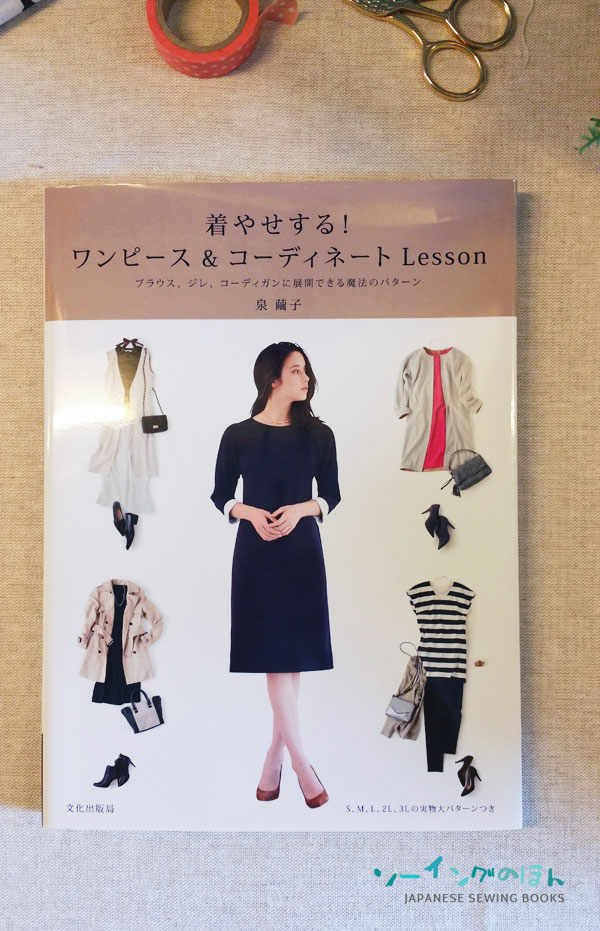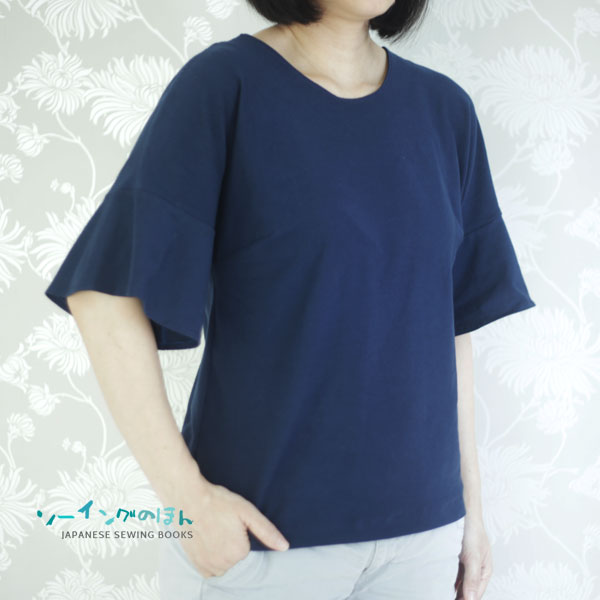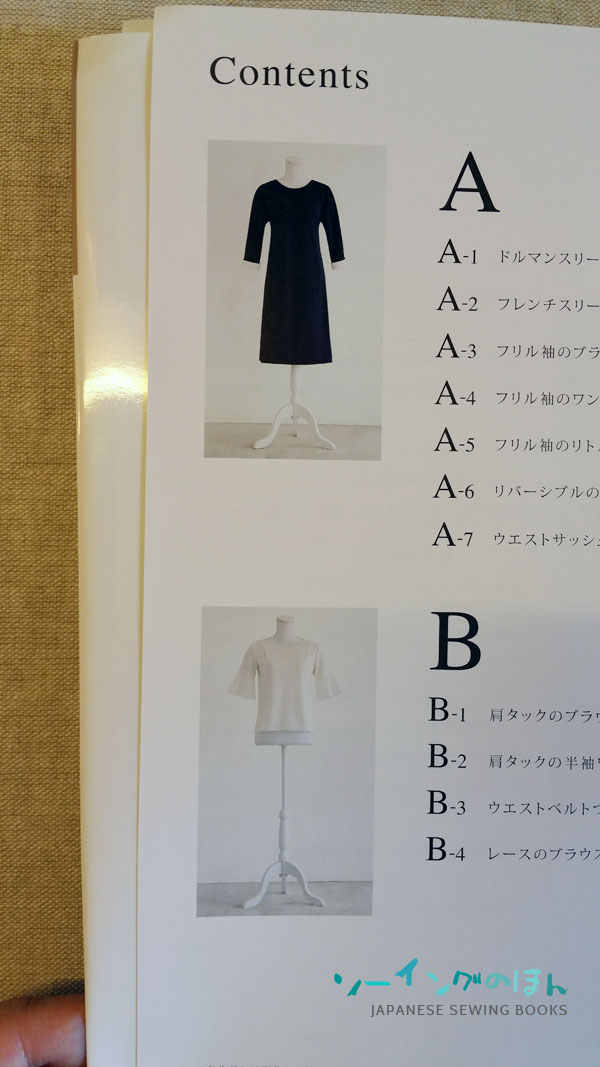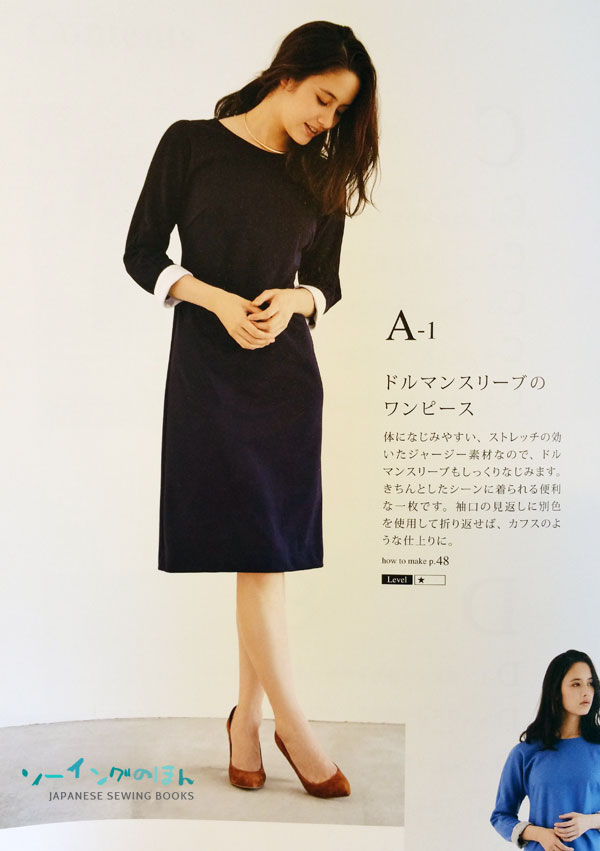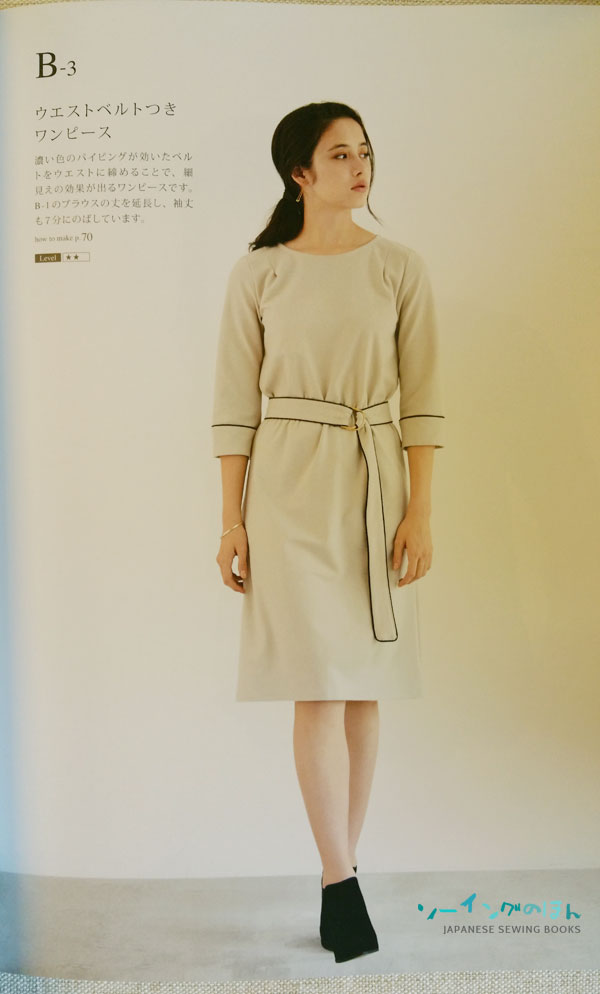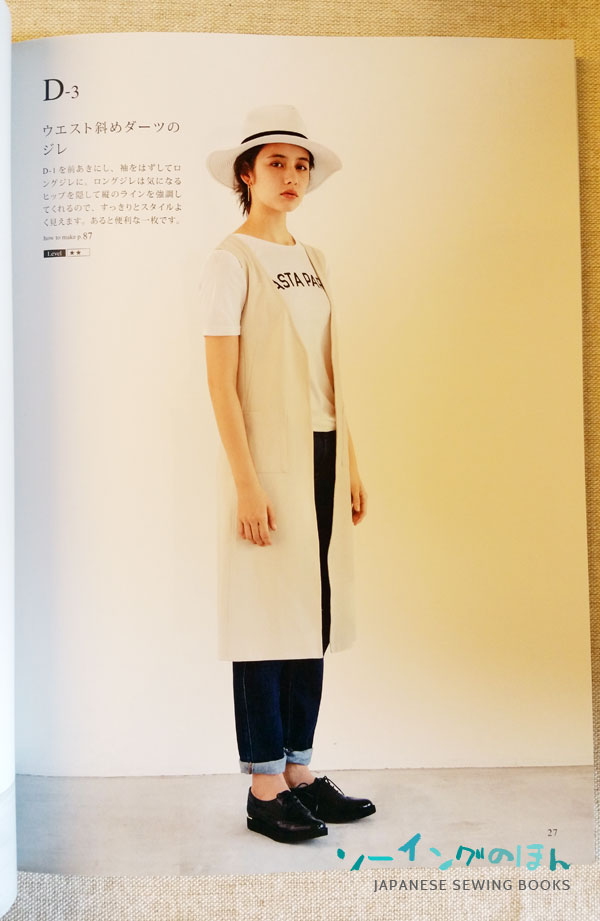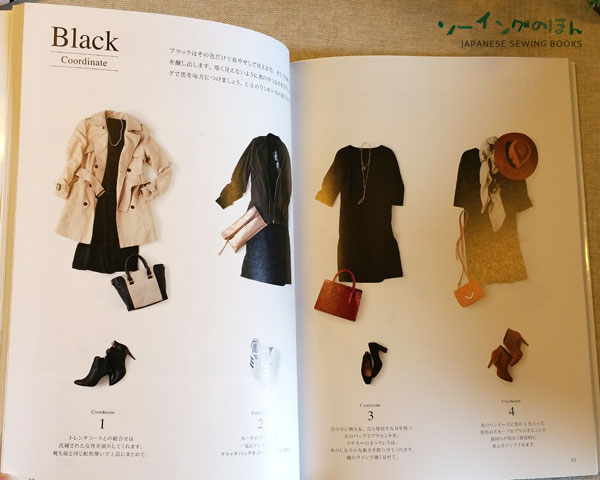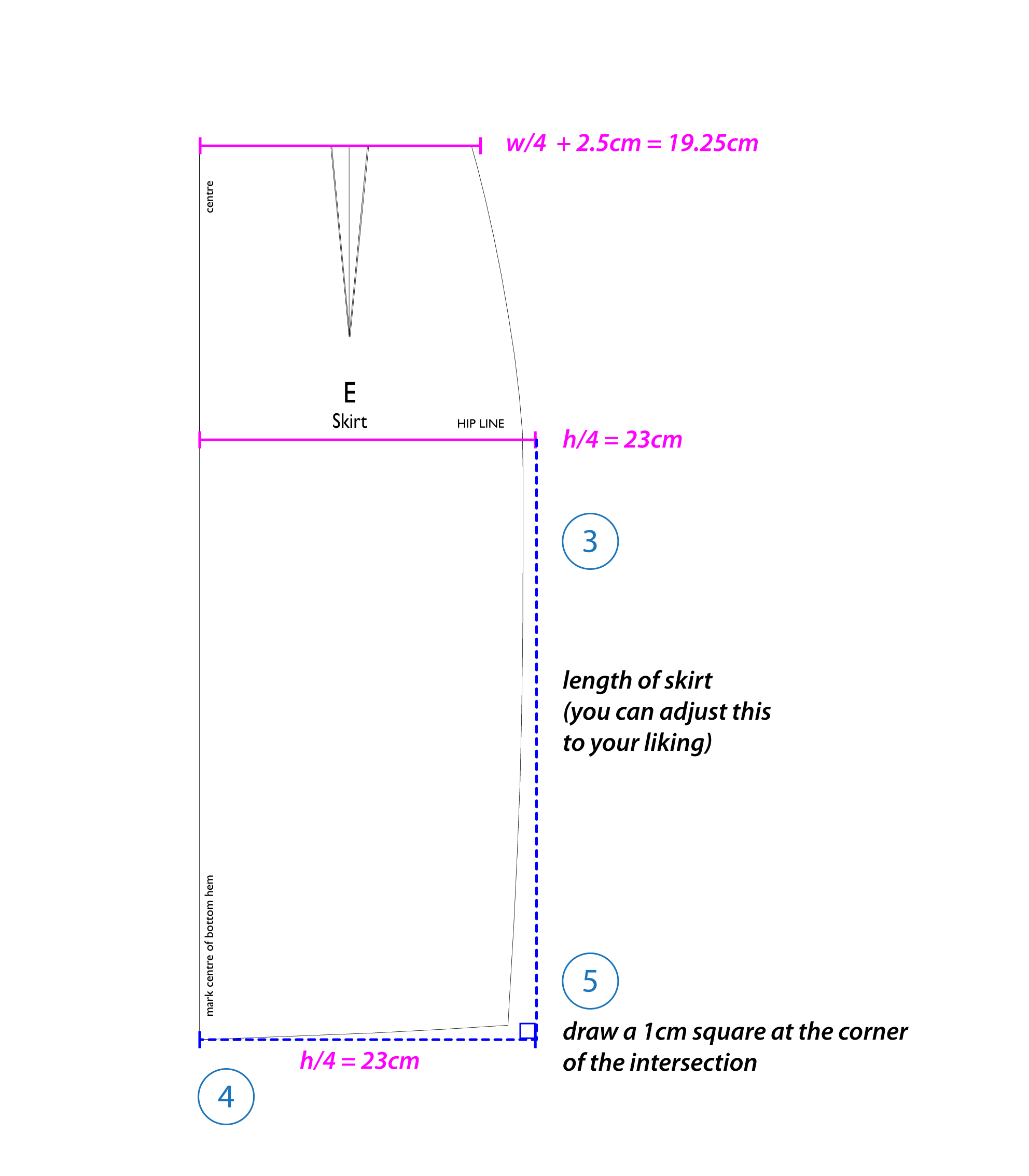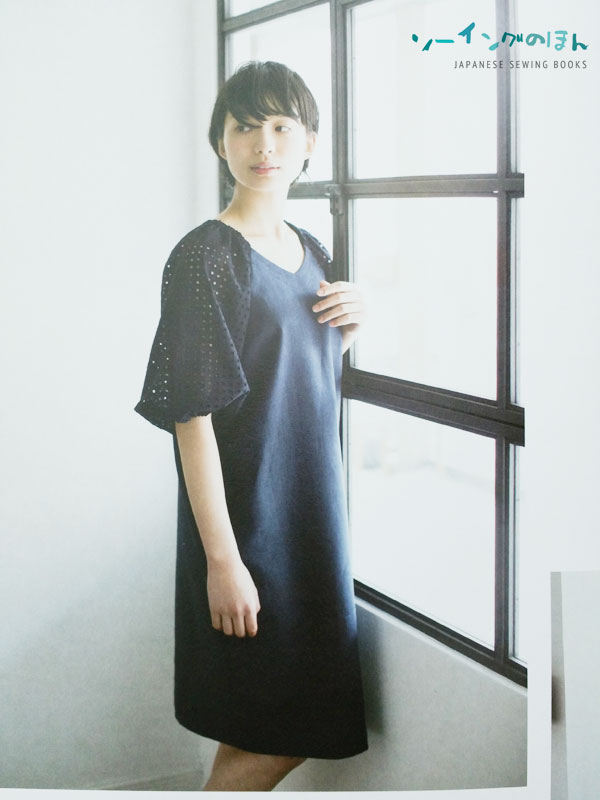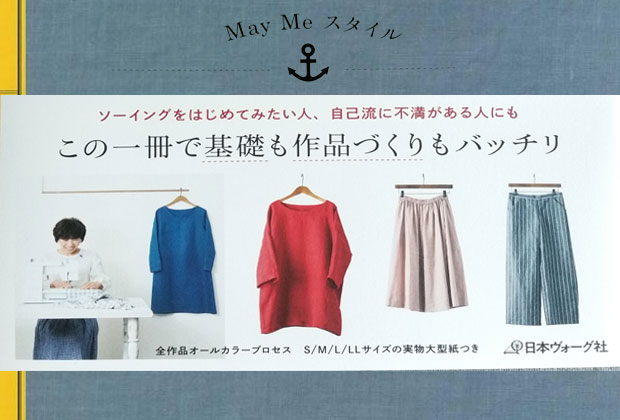Moving down the list of books waiting to be reviewed, here is another book I bought during my last holiday in Japan. It was released November 2015 and it is by quite a familiar name in the Japanese Sewing Books category. The author is Michiyo Ito, designer of May Me Style. The last May Me Style book I reviewed was this one in Chinese.
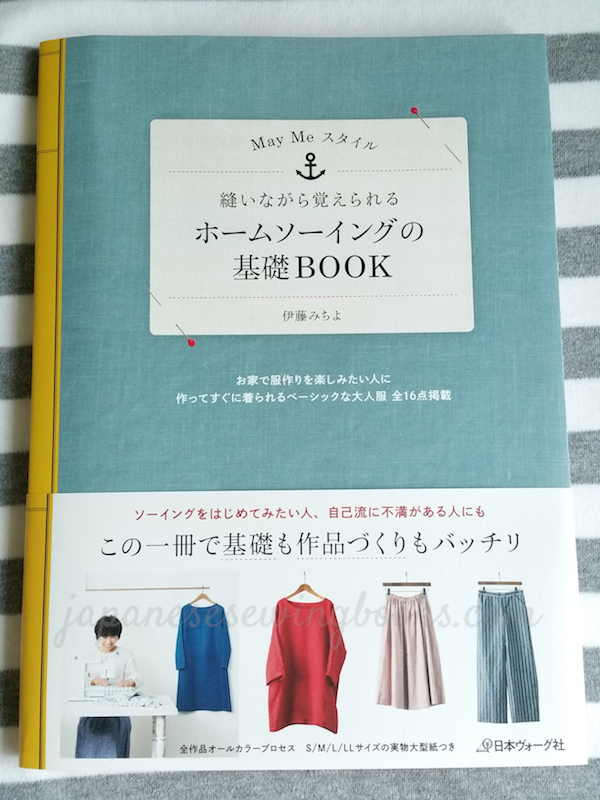
If you are familiar with May Me Style books, they usually feature simple but sweet designs, using cotton and linen fabrics for a natural look. This book is not just a sewing pattern book though, it is in fact, a textbook and sewing pattern book combined. The title is Home Sewing Basics Book, and I think it’s great for all home sewing enthusiasts, whether you are a beginner or an advanced sewer . It is a rather thick book, 111 pages and is full of useful patterns and essential sewing techniques.

The index page is all in Japanese, no pictures, so it might throw some of you off, but to summarize the contents, the book starts off with some basic steps of sewing, followed by 16 projects of varying difficulties and techniques.

Before we begin, here is the size chart for the patterns included with this book.

As mentioned earlier, the book starts off with the basics. From tools you need,

to selection of materials…
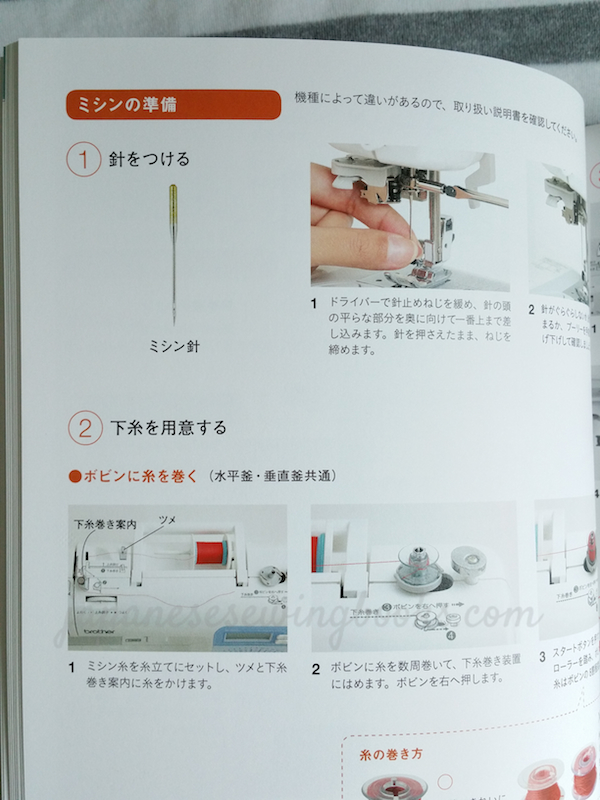
to threading of your machine….

tracing and laying out your patterns,

to cutting out your fabric. Everything is detailed in step by step photographs. The descriptions are in Japanese though, but I think the photographs are quite self-explanatory.
The second section of book introduces 16 different projects that you can make. For each project, you will get to learn a different technique (see the red dotted box below the description). The projects will progress to more difficult techniques and by the time you finish the book, you should be quite an accomplished sewist!
Please forgive the slightly crooked pictures as I took these pictures while the baby was sleeping on me in the sling. 😛
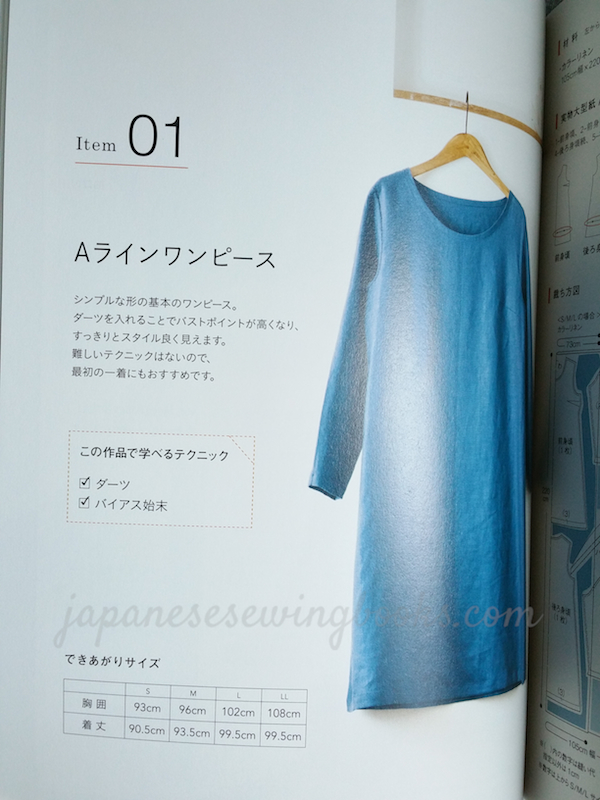
Item 1 – A-Line Dress.
Techniques to be learned – Darts, Attaching Bias tape
Notice that for each item, there is also a table below with some sizing info. This is the completed garment dimensions. So it gives you an idea of the fit and allows you to select the correct size to make.

As mentioned above, this book is like a sewing textbook of sorts. For every single project, there is a sewing lesson with detailed photos of the techniques. A sample of the step by step photos for item 1 is shown above.

Item 2 – Browsing Dress
Technique – Making a fabric drawstring and casing

Item 3 – Off Shoulder Tunic
Technique – Finishing necklines with facing.

Item 4 is a variation of item 3. You see the words “Arrange” above the title? In Japanese sewing books this usually means a different “arrangement” of the same pattern, or what we call a pattern variation. In this variation, you learn to make a Slash opening to the front of the tunic.

Item 5 is a Peplum blouse, where you learn the technique of making Gathers

Item 6 is a variation of Item 5 – Tuck Peplum Blouse. Instead of making gathers, you learn to make Tucks.

Item 7 is a Pin Tuck Dress where obviously, you will learn to make pin-tucks.

Item 8 is a Pullover.
Techniques to be learnt – Back slit opening, Making button loops.
The description in the box actually says Piping for the second technique, but I think it is an error because I looked through the instructions and could not find any piping used. The neckline and sleeve openings are finished using bias tape as well.

Item 9 is a variation of item 8 – a Back opening pullover.
In this project, you will learn a different method of making a back opening using a row of buttons. you will also learn how to make button holes.

Item 10 – Knit Cut and Sew.
Techniques – Sewing with knits, Matching prints on fabrics (how to cut fabrics so that the prints on the side are joined properly)
I have come across this term “Cut and Sew” many times while shopping at Uniqlo, and never really knew what it means. I wondered if it was a real sewing term and apparently it is! It is well explained in this article here.

Item 11 – Collar band blouse
Techniques – Attaching a collar, making a sleeve placket, attaching buttons

Item 12- Gathered Skirt
Technique – Attaching hidden side pockets to a skirt

Item – 13 Flared Skirt
Techniques – Attaching a concealed (invisible) fastener (zipper), finishing the hems of a flared shape.

Item 14 – Wide Pants
Technique – Attaching pants pockets

Item 15 – Slim Pants
Technique – attaching side pockets

Item 16 – Leggings
Techniques – Making simple adjustments to pattern, sewing with knits

2 large actual size pattern sheets, double sided printing, which makes a total of 4 pattern sheets.

A picture of the author, and links to her website http://www.mayme-style.com where you can find more of her works and books.
This book is definitely a keeper for me, as there are so many techniques in here that I have yet to try, for example the sleeve placket and the different types of side pockets. The clear picture references are really useful as it means I don’t have to keep checking the terms or whip out a dictionary to understand the steps completely. On top of that, there are also useful tips and notes for certain projects. For example, there are pictorial comparisons of how your choice of fabric makes a difference in the draping and fullness when making a flare skirt, or how the degree of gathers makes a difference to the look of a peplum top. I will certainly recommend this book if you are a beginner as well, as it starts off with the very basics. The thickness of the book also makes the book really worth it for the price! 🙂
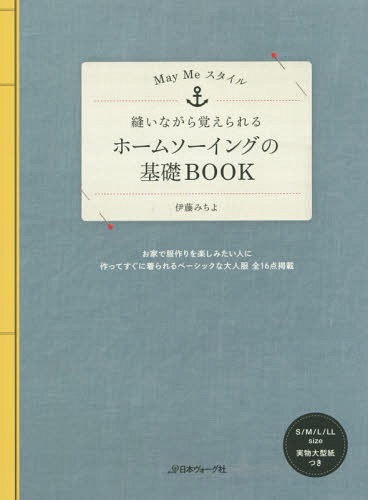
Buy now from cdjapan (affiliate link)
Title : May Me Style – Home Sewing Basics Book
Author : Michiyo Ito
ISBN No: 978-4-529-05500-0

